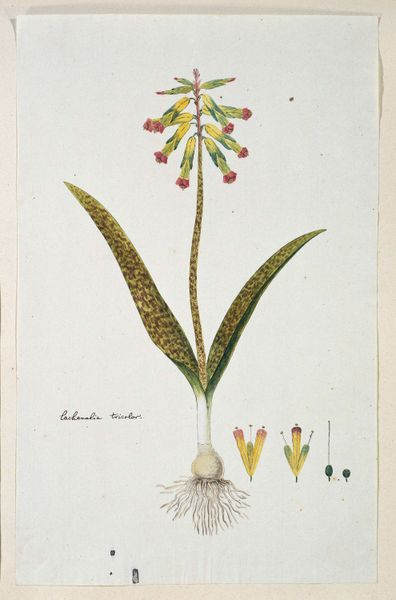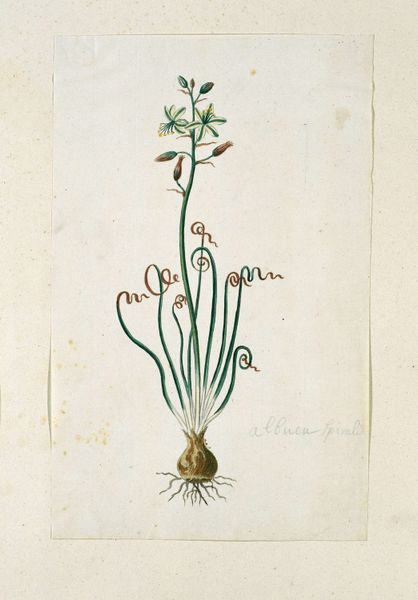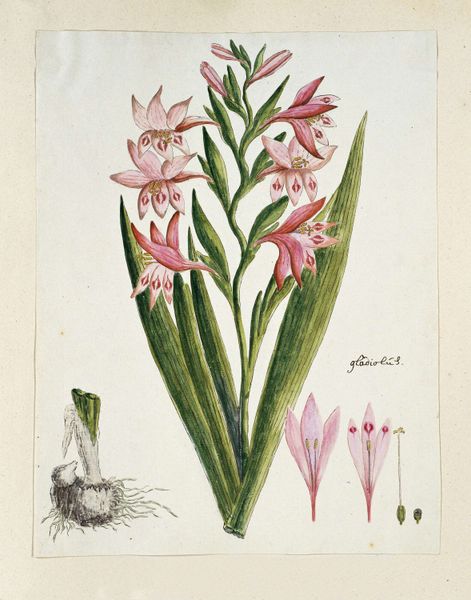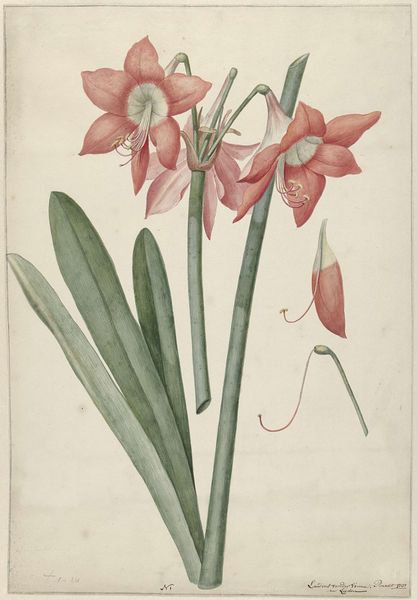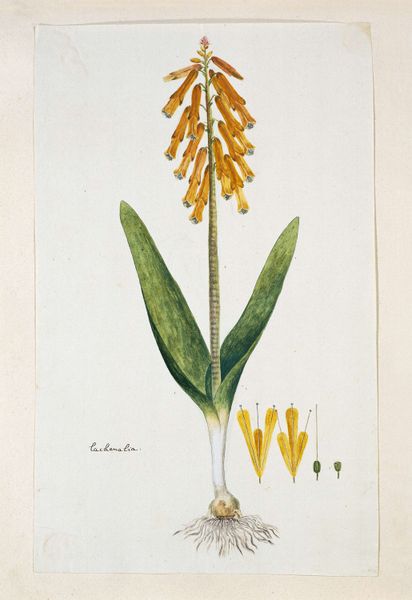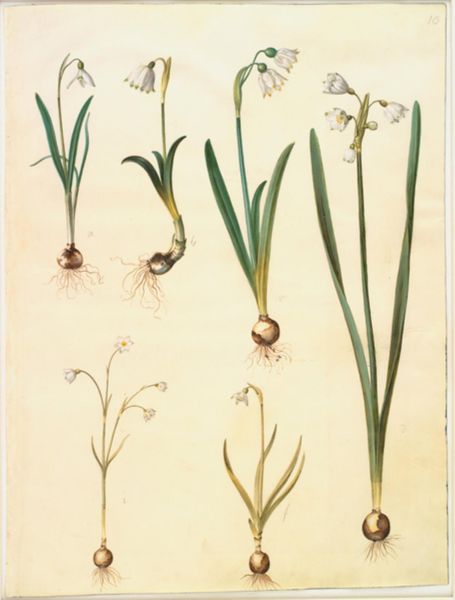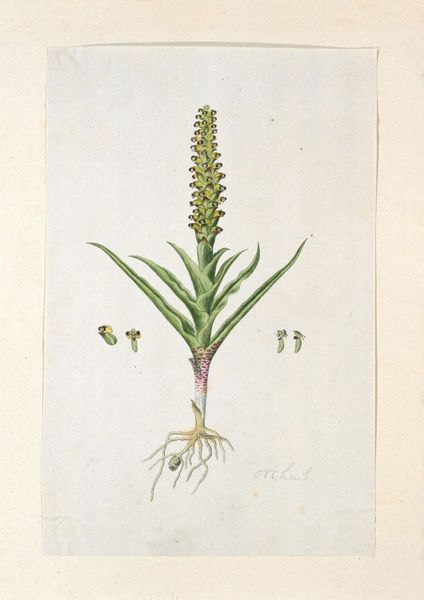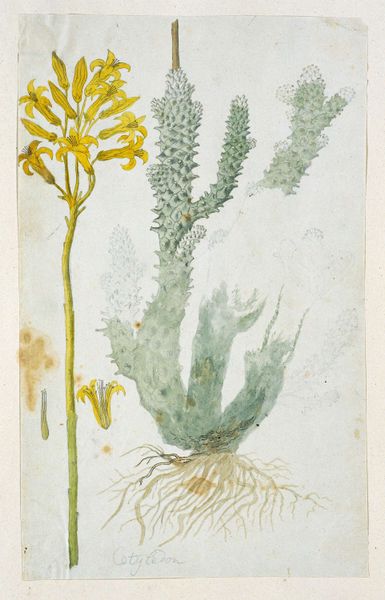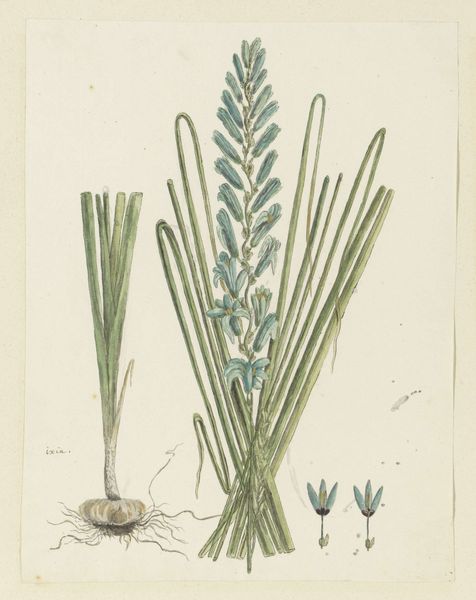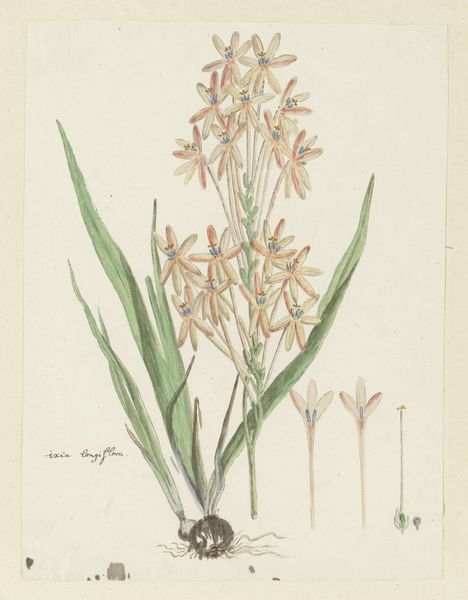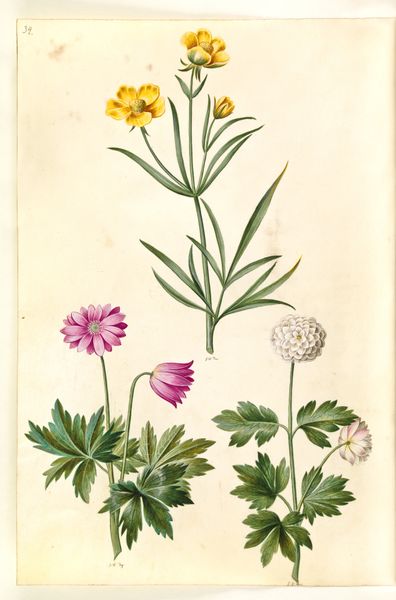
Lachenalia aloides (L.f.) Engl. var. quadricolor (Opal flower) Possibly 1777 - 1786
0:00
0:00
Dimensions: height 660 mm, width 480 mm, height 428 mm, width 268 mm, height mm, width mm
Copyright: Rijks Museum: Open Domain
Curator: Let’s turn our attention to this vibrant watercolor by Robert Jacob Gordon, "Lachenalia aloides var. quadricolor," created somewhere between 1777 and 1786. Editor: It's certainly striking. My immediate impression is one of delicate precision; the rendering of each individual flower and leaf is meticulous. There’s a sense of cool observation rather than overt emotion. Curator: Gordon's work needs to be understood through the lens of colonial botany. As a military commander in the Dutch East India Company, his journeys across the Cape weren't purely scientific. This detailed record also served an imperial purpose – charting resources, mapping territory, all while contributing to scientific knowledge of the time. Editor: The artist clearly gives primacy to line and form, creating sharp edges. The contrasting colors—the green leaves, the yellow flowers, the red-brown tips—achieve a remarkable clarity. It seems less about evoking a specific place, more about the thing itself. Curator: But that “thing” is intertwined with place, with history. Gordon's portrayal freezes a specific species within a context of colonial extraction. Think about the politics of naming, of cataloging… how that becomes an act of control over the natural world and, by extension, the people who inhabit it. It’s worth mentioning how scientific naming is rooted in male-dominated spaces and the ways people began understanding nature at the time. Editor: Perhaps. But the structural composition is what truly interests me. Observe how the vertical thrust of the leaves and stems is countered by the drooping flowers. These downward curves mimic, in a way, the fall of light, which enhances the botanical specimen and draws the eye deeper into the arrangement of elements. Curator: And how can we divorce that arrangement from the very real power dynamics at play in South Africa at that time? We can’t ignore that while the painting itself presents the "Opal Flower" as an objective, aesthetically pleasing subject, its creation and subsequent interpretation are inseparable from the colonial project and power structures of the era. It invites us to reflect on questions about land use and extraction from colonized countries, too. Editor: A compelling consideration, certainly. And yet, the undeniable elegance of its formal structure, that harmonious orchestration of line, shape and color... it remains a testament to an artistic sensibility trained on acute observation. Curator: Trained indeed, and serving whom? It prompts us to always question whose perspectives we are centering when discussing nature and art, because our very experience of aesthetics are informed by these complicated historical moments.
Comments
No comments
Be the first to comment and join the conversation on the ultimate creative platform.
